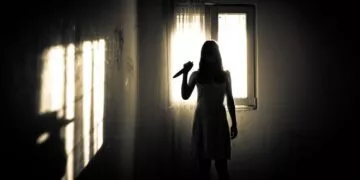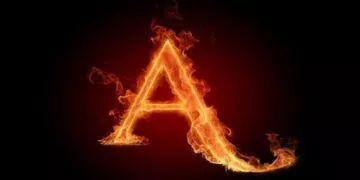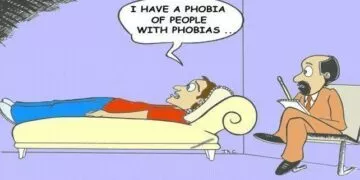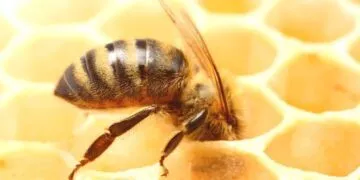Clowns have appeared in countless novels, performances, and films for well over 200 years.
These sometimes scary but goofy characters are well-known characters to appear at children’s birthday parties or to feature as villains in horror movies.
But where do clowns come from and why are they so popular within cultures across the globe today?
Here are 10 crazy facts about clowns that you should know.
The word clown first appeared in 1560.
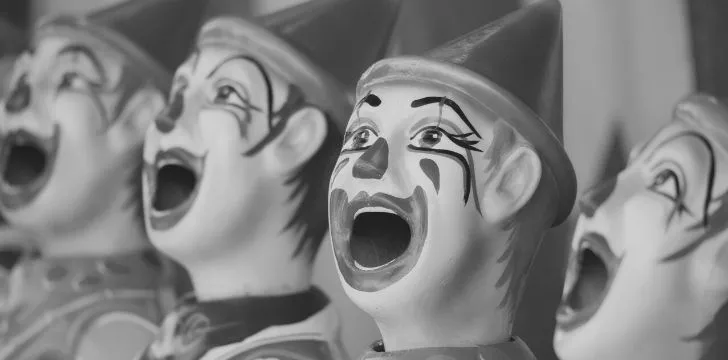
The first written documentation of the word clown in English appears in a text in 1560.
Back then it was written as clowne or cloyne.
Clowne or cloyne was used within texts to mean; rustic, boor, and peasant.
It is said that the origin of the word clown comes from the Icelandic word klunni.
The translation of the word klunni means clumsy person.
2016 was the year of the Great Clown Scare.
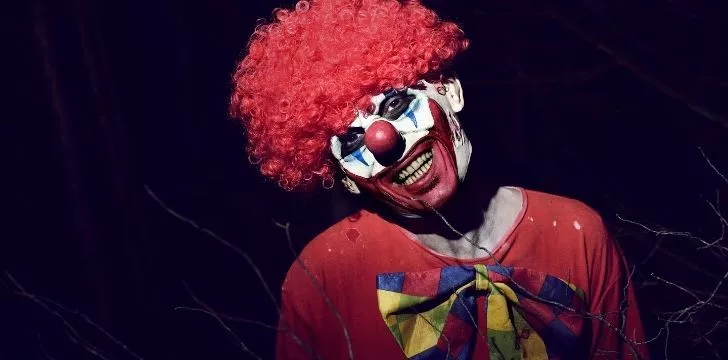
In 2016 we saw the Great Clown Scare, where across the globe there was an abnormal number of clown sightings.
These sightings of people dressed as “evil” clowns drew attention because they were found hanging around in forests and schools.
This wasn’t just happening in the USA, but also in Canada, UK, and 17 other countries around the world.
The first sighting which is believed to have sparked the movement was in Green Bay, Wisconsin, and was said to have been a publicity stunt to promote the release of a new horror film.
As a result of these sightings, countries took various precautions to deal with the global clown situation.
This included banning the selling of clown costumes, banning wearing clown outfits and masks in certain areas, and putting out government warnings in place for safety.
Clowns International is an association for clowns.
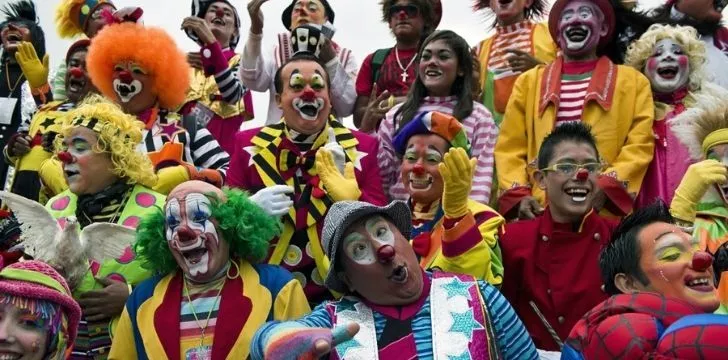
Clowns International, formerly known as the International Circus Clowns Club was formed in 1947 by circus enthusiast Stan Bult.
The organization was formed following a tradition that started in the early 1940s by circus owner Billy Smart.
Every year clowns would renew their circus contracts, and Smart had the idea to mark the occasion by visiting Joseph Grimaldi’s grave in London.
Clowns were encouraged to visit and lay wreaths to pay respects to the father figure of the clown industry.
This tradition was repeated year after year until 1947 when Stan Bult decided to form Clowns International.
The idea was to unite clowns across the globe to share industry knowledge and to be able to network with circus folk.
Joseph Grimaldi was the first famous clown.
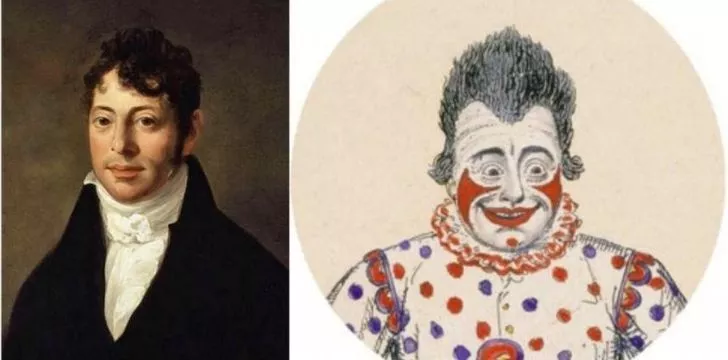
Grimaldi is seen as the father of clowns, he was amongst some of the first clowns to perform professionally and he is the most well-known within the industry for his contribution to clowning.
He first appeared on stage in England in 1802 as the clown “Joey”, who became known for his slapstick humor and physical tricks.
In 1802 Grimaldi became the sole resident clown at Sadler’s Wells theatre in London.
Some of the first professional stage clowns alongside Grimaldi were William Kempe and Robert Amin who both worked with Shakespeare in the 17th Century.
Clowns paint their faces to exaggerate expressions.
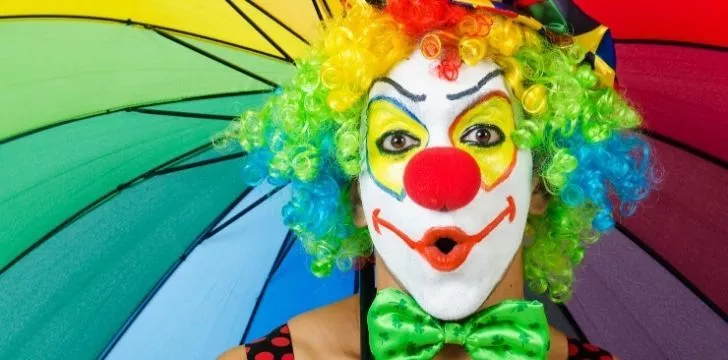
Grimaldi was the inventor of the face paint that clowns wear as their stage makeup.
The first appearance Grimaldi made wearing face paint was when he was playing his character Joey the clown.
The theater called Sadler’s Wells in London had closed for refurbishment in 1801 and reopened in 1802 with the clown Joey as the main role.
Grimaldi wanted to make an outstanding appearance for the reopening so he spent some time redesigning his character and his appearance.
This is when the face paint trend began. He started with a white base layer that covered his face and neck.
He then added red triangles on his cheeks, grinning red lips, and thick eyebrows to exaggerate his expressions.
Grimaldi’s biographer Andrew McConnell Stott explained that this was pivotal at the time and this face paint became one of the most influential theatrical designs of the 1800s.
Pennywise is known as the scariest clown.
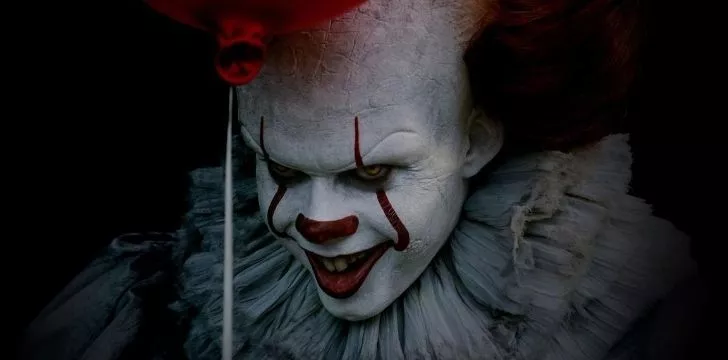
Clowns have been used in horror films and books for many years, as mysterious and evil characters.
But the scariest known evil clown is Pennywise from Stephen King’s horror novel “IT.”
Pennywise the Dancing Clown is a character within the novel that preys on children and has the ability to shape-shift and manipulate reality.
Pennywise comes to haunt the children of Maine every 27 years and causes uproar as it cannot be seen by adults.
The first fictional killer clown was in 1892.
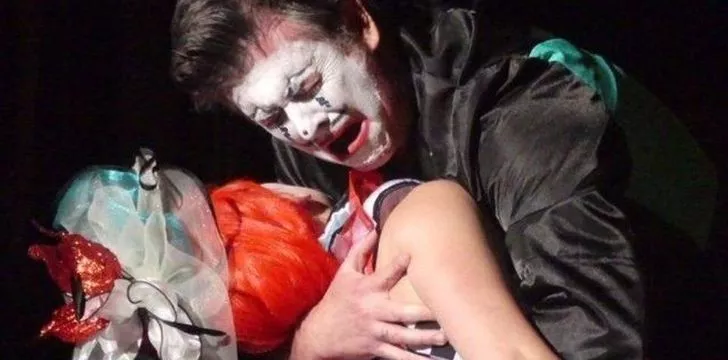
The first killer clown to appear on stage was in Ruggero Leoncavallo’s opera titled Pagliacci.
The Italian word “Pagliacci” means clown and the opera tell the tale of a love affair.
This love affair and betrayal lead the character dressed as the clown to stab his lover.
The opera is performed in the style of commedia dell’arte which is an Italian style of performance that involves the actors wearing masks and dressing similarly to clowns.
A jester is not a clown.
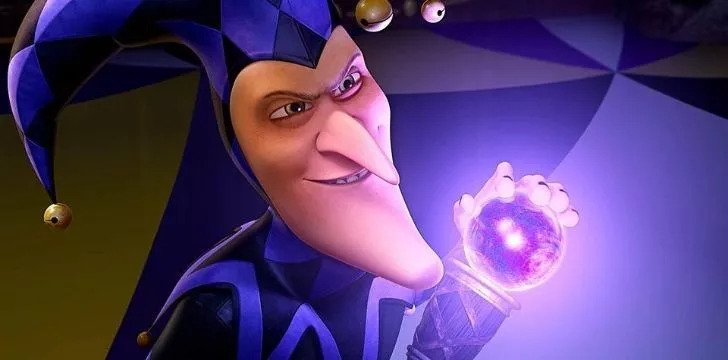
You may think that a clown and a jester are the same things as they are both colorful entertainers. But they are actually two different types of characters.
They both wear colorful clothing to exaggerate their characters.
A clown is known as a performance artist who performs slapstick and has a routine planned out.
A jester however is known as an entertainer who jokes and mocks and will improvise on the spot.
The difference being that a clown makes a fool of themselves whereas a jester makes a fool of the audience.
Clowns are associated with the circus whereas jesters would have been for the private entertainment of royalty in medieval times.
Coulrophobia is the fear of clowns.
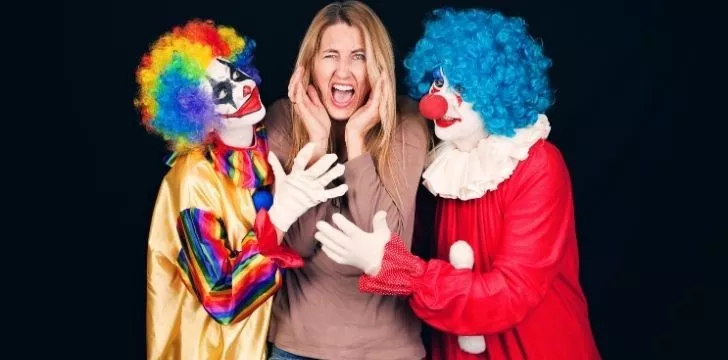
The fear of clowns is a real thing and according to a survey carried out in 2016 by Chapman University, 7.8% of Americans that took part were afraid of clowns.
The study looked at the top American fears and clowns came within the top four most common answers within personal fears.
Following the Great Clown Scare of 2016, Vox conducted a survey that revealed the outcome that Americans were more afraid of clowns than they were climate change.
The study showed that due to the increased fear in these random sightings of evil clowns, people were becoming increasingly worried about their safety.
A poll conducted as part of the investigation showed that from the 1,999 who took part, 42% were afraid of clowns in some capacity.
The study showed that around 1 in 3 voters between the ages of 18-29 had at least mild coulrophobia.
There is an international clown week.
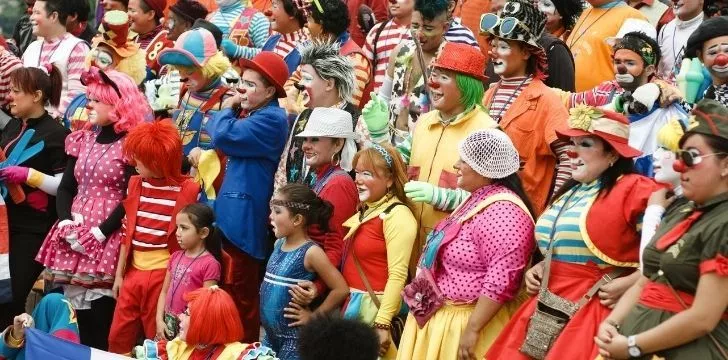
International Clown Week was passed in US law by President Richard Nixon on August 2, 1971.
It is celebrated every year in the first week of August, with the concept of celebrating, informing, and promoting the clown industry.
The first celebrations arose in the 1950s with smaller gatherings and volunteer shows being held to promote all things about clowning around.
In 1967 the Clown Club of America encouraged its members to write to Congress to make the week official.
Clowns have become embedded within modern entertainment, through performance and film.
Although over the years there has been a decline in the number of circus shows, their legacy will live on through children’s birthday parties and modern horror films.


